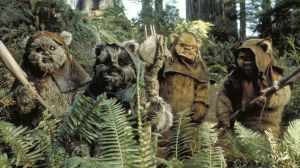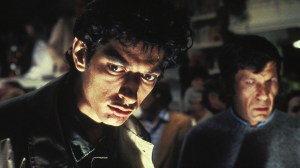The Jurassic Park franchise has its share of unanswered questions, and one in particular from the 1993 original continues to elude any kind of answer. Jurassic Park famously focuses on dinosaurs brought into the modern world through cloning technology, with the dinos to be the featured attraction of the soon-to-open island theme park known as Jurassic Park. Based upon Michael Crichton’s 1990 novel, Jurassic Park is equal parts adventure and monster movie, with the human protagonists in awe of the revived dinosaurs at one turn and fleeing them after their escape the next. One example of the former is shown in the movie’s scene of the first tour group coming across a very sick Triceratops.
Videos by ComicBook.com
The Triceratops scene is among the most memorable in Jurassic Park, even 32 years later, showcasing just how ahead of their time the movie’s dinosaur animatronics and visual effects really were. However, there is one big question that still lingers from Jurassic Park‘s Triceratops scene — that being the mystery of how Triceratops fell so terribly ill to begin with.
What Made the Triceratops Sick?
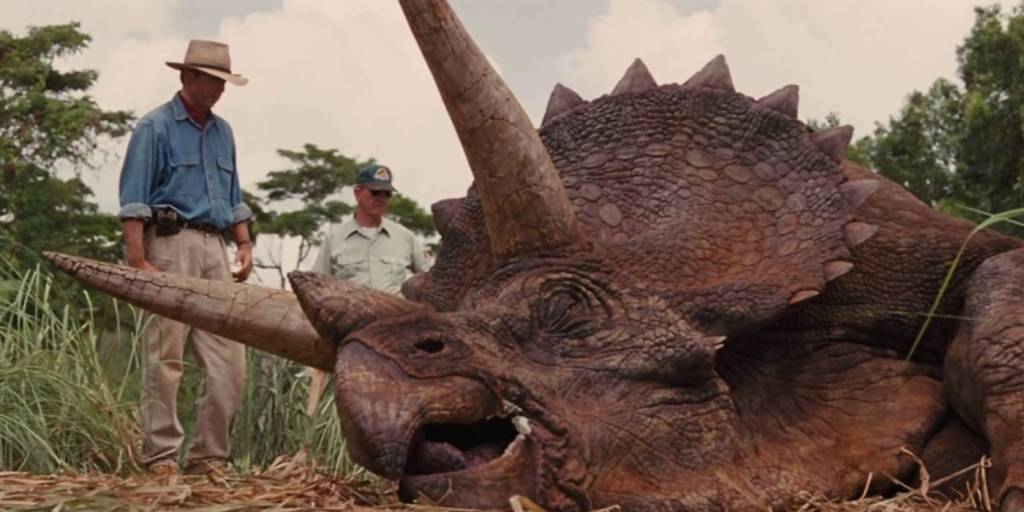
When the tour group happens upon Dr. Harding (Jerry Molen) treating the Triceratops, the dinosaur is clearly quite ill. Dr. Ellie Sattler (Laura Dern) initially theorizes that the Triceratops may have consumed some West Indian lilac berries nearby, despite Dr. Harding expressing relative certainty, “We know they’re toxic, but the animals don’t eat them.” Dr. Sattler decides to double check by examining the fecal droppings of the Triceratops, leading right into the immortal line of Jeff Goldblum’s Dr. Ian Malcolm “That is one big pile of sh-t,” with Dr. Sattler finding no traces of lilac berries.
While that rules out the lilac as the culprit of the Triceratops’ illness, Dr. Sattler nor any of the other scientists have much time to come up with an alternative hypothesis with the arrival of a coming tropical storm on Isla Nublar. With the tour group forced to return to their cars and head back to the Visitor’s Center, Jurassic Park’s Triceratops scene ends without any real answer being given about why the Triceratops had become sick and how severe the dinosaur’s illness was. This has been a question that Jurassic Park fans have ruminated over since 1993, and there’s even an offshoot question deriving from the same scene that also has no clear answer.
RELATED: Jurassic Park Fans Are Still Confused by This Line Over 30 Years Later
Did the Group Just Leave the Triceratops Out in the Tropical Storm?
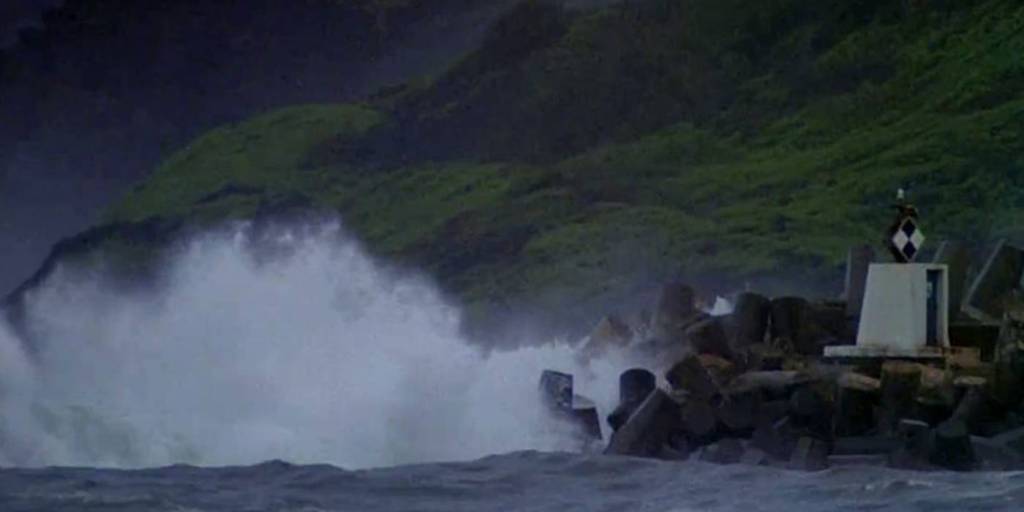
With the arrival of the tropical storm, the tour group is forced to return to their Jurassic Park tour cars, partly on the insistence of lawyer Donald Gennaro (Martin Ferrero) “that we get moving.” Dr. Sattler elects to stay behind to continue treating the Triceratops, while Dr. Harding volunteers to drop Dr. Sattler back at the Visitor’s Center in his gas-powered Jeep before heading for the ferry departing from Isla Nublar. With the park’s subsequent breakdown and the rampage of the T-Rex as she escapes her pen is the main focus of Jurassic Park‘s attention thereafter, the movie also doesn’t answer how the sick Triceratops was accommodated in the face of an impending tropical storm.
The dinosaur is obviously far too large for a pair of humans like Dr. Harding and Dr. Sattler to move. Additionally, the illness has taken such a toll on the Triceratops that she seems far too fatigued and lethargic to seek shelter. In the end, the tour group, Dr. Sattler, and Dr. Harding don’t seem to have had many good options available to them in this situation other than to treat the Triceratops as best as could be done under the circumstances and head for shelter. While a tropical storm is certainly something for humans to seek refuge from, a dinosaur like the Triceratops that is used to living her entire life outdoors is better equipped to deal with it, even when afflicted with a mysterious sickness (Jurassic Park’s other dinosaurs being largely left to the elements and the incoming storm themselves). Still, it’s unfortunate that the tour group and treating scientists weren’t able to provide much in the way of shelter for the sick Triceratops.
Did the Triceratops Ever Get Better?
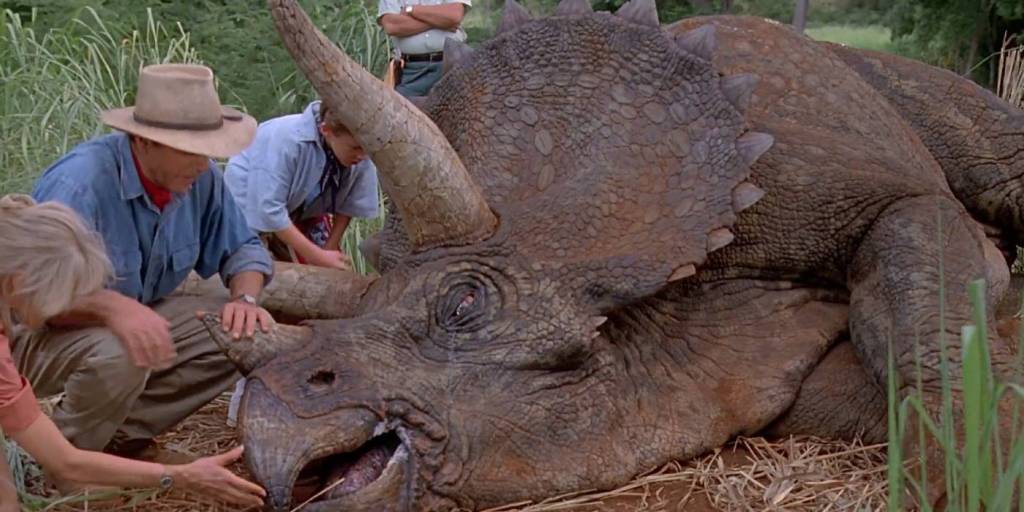
Without knowing for certain what caused the Triceratops to fall ill in the first place, it’s equally impossible to know — and just as confounding for Jurassic Park fans — whether the Triceratops actually recovered from her illness and when. From the condition she appears to be in, the Triceratops is afflicted with something far worse than a dinosaur cold. Moreover, despite the mountainous piles of fecal matter the Triceratops has left nearby, it doesn’t seem to be a case of the herbivore eating a patch of grass that her stomach didn’t agree with. Whatever sickness hit the Triceratops, it clearly hit her hard.
It’s worth noting, however, that in the original novel, it is explained that the sick dinosaur (which is a Stegosaurus in the source material) would eat stones to help digest its food, grinding up the contents of its stomach, but the stones themselves were close to a poisonous plant. This meant that the Stegosaurus would regularly get sick when accidentally ingesting poisoned berries that were near these stones.
Ultimately, the nature of the sickness the Triceratops was afflicted with is one Jurassic Park question that may never be answered. Dr. Sattler and Dr. Harding might well have uncovered the source of the dinosaur’s sickness some time between when the tour group left and when the two scientists were eventually forced to depart in order to avoid the coming tropical storm. However, the fact that Dr. Sattler, Dr. Harding, and the movie itself seem to have kept the cause of the Triceratops’s sickness to themselves is a mystery that Jurassic Park fans have been unable to solve on their own for over three decades.
Jurassic Park is available to stream on Peacock, and can be rented on Prime Video, Google Play, Apple TV, and Fandango at Home.

